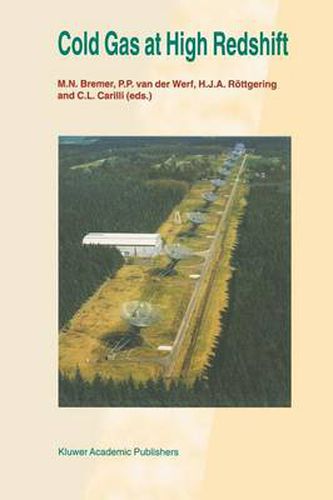Readings Newsletter
Become a Readings Member to make your shopping experience even easier.
Sign in or sign up for free!
You’re not far away from qualifying for FREE standard shipping within Australia
You’ve qualified for FREE standard shipping within Australia
The cart is loading…






This title is printed to order. This book may have been self-published. If so, we cannot guarantee the quality of the content. In the main most books will have gone through the editing process however some may not. We therefore suggest that you be aware of this before ordering this book. If in doubt check either the author or publisher’s details as we are unable to accept any returns unless they are faulty. Please contact us if you have any questions.
Recent years have seen increasing evidence that the main epoch of galaxy formation in the universe may be directly accessible to observation. An gular fluctuations in the background relict radiation have been detected by various ground-based instruments as well as by the COBE satellite, and suggest that the epoch of galaxy formation was not so very early. Combined optical and radio studies have found galaxies at redshifts above 2. 0, systems that at least superficially show the characteristics expected of large galaxies seen only shortly after their formation. And absorption lines in the spectra of quasars seem to be telling us that most cold gas at early to intermediate cosmological epochs was in clouds having roughly galaxy sized masses. What kinds of new observations will best help us study this high redshift universe in future? What new instruments will be needed? These are questions that loom large in the minds of the Dutch astronom ical community as we celebrate 25 years of operation of the Westerbork Synthesis Radio Telescope. Celebration of this Silver Jubilee has included a birthday party (on 23 June, 1995), a commemorative volume looking at both the history and the future of the facility ( The Westerbork Observa tory, Continuing Adventure in Radio Astronomy, Kluwer 1996), and an international workshop, held in the village of Hoogeveen on 28-30 August, 1995.
$9.00 standard shipping within Australia
FREE standard shipping within Australia for orders over $100.00
Express & International shipping calculated at checkout
Stock availability can be subject to change without notice. We recommend calling the shop or contacting our online team to check availability of low stock items. Please see our Shopping Online page for more details.
This title is printed to order. This book may have been self-published. If so, we cannot guarantee the quality of the content. In the main most books will have gone through the editing process however some may not. We therefore suggest that you be aware of this before ordering this book. If in doubt check either the author or publisher’s details as we are unable to accept any returns unless they are faulty. Please contact us if you have any questions.
Recent years have seen increasing evidence that the main epoch of galaxy formation in the universe may be directly accessible to observation. An gular fluctuations in the background relict radiation have been detected by various ground-based instruments as well as by the COBE satellite, and suggest that the epoch of galaxy formation was not so very early. Combined optical and radio studies have found galaxies at redshifts above 2. 0, systems that at least superficially show the characteristics expected of large galaxies seen only shortly after their formation. And absorption lines in the spectra of quasars seem to be telling us that most cold gas at early to intermediate cosmological epochs was in clouds having roughly galaxy sized masses. What kinds of new observations will best help us study this high redshift universe in future? What new instruments will be needed? These are questions that loom large in the minds of the Dutch astronom ical community as we celebrate 25 years of operation of the Westerbork Synthesis Radio Telescope. Celebration of this Silver Jubilee has included a birthday party (on 23 June, 1995), a commemorative volume looking at both the history and the future of the facility ( The Westerbork Observa tory, Continuing Adventure in Radio Astronomy, Kluwer 1996), and an international workshop, held in the village of Hoogeveen on 28-30 August, 1995.